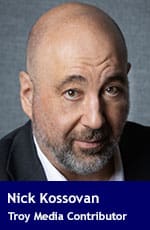Discover why your job search fails by seeing the hiring process through an employer’s eyes

For interview requests, click here
As regular readers of my columns know, I stress that an individual’s mindset can make or break their job search: how you think is everything.
Even though the job market is flooded with candidates, many of them younger, hungrier, and more qualified than them, job seekers seldom consider how they’d hire if they were a hiring manager or employer. Metaphorically speaking, employers have the pick of the litter.
When job searching, you’re essentially seeking acceptance and approval—searching for “Yes, we want you”—hence, taking into account the employer’s perspective is imperative. Experienced negotiators understand the importance of considering and empathizing with the other party’s perspective.
 |
| Recommended |
| Stop expecting employers to ‘give you a chance’
|
| How to navigate the brutal job market of 2025
|
| How to make yourself the obvious choice for getting hired
|
Much of the discourse between job seekers viewing employers as enemies and employers would dissipate if job seekers:
- Chilled on their sense of entitlement.
- Considered the employer’s viewpoint.
Rather than becoming angry at employers for hiring candidates they feel will be in their best interests, job seekers should focus on figuring out how to position themselves as much as possible so employers see hiring them as being in their best interest.
Visualize yourself as the Director of Operations for a multinational telecom, reporting to a VP who has visibility of your direct reports’ performance and your hiring decisions. You’re conducting first interviews for a Customer Experience Manager (hybrid work schedule, Tuesdays, Wednesdays and Thursdays in the office) who’ll lead various customer communication channels and develop solutions for improving customer experience.
Your career management acumen is such that you’re keenly aware that who you hire will be judged by your boss, the other directors and managers, and current team members and, therefore, reflect your judgement and hiring skills—a factor job seekers conveniently overlook.
A peek behind the hiring curtain: It’s common for a hiring manager to like a candidate for the job but feel that they won’t mesh well with the current team and pass on the candidate.
Which candidate would you move forward to a second interview because you felt hiring them would be in your employer’s and your interest?
Candidate A: After graduating, they joined your competitor, Argusia Telecom, where they’ve worked for the past 15 years, rising from customer service representative to managing their 85-seat inbound call centre.
Candidate B: Has worked for five telcos over the past 12 years, has two lengthy (over six months) job gaps, and is presently unemployed for eight months.
Candidate A: Would have a 15-minute commute via public transit.
Candidate B: Would drive 45 minutes from the city’s west side.
Candidate A: They’ve been sitting on the local Telecommunications Industry Association advisory board for the past four years. They also volunteer five hours a week, delivering meals to seniors.
Candidate B: Likes binge-watching Netflix series.
Candidate A: Doesn’t ask about the hybrid work schedule.
Candidate B: Ask if they can work remotely full-time.
Candidate A: Provides a document outlining their plan for the first 30-60-90-180 days, with measurable milestones.
Candidate B: Asks how long the probationary period is.
Candidate A: When asked about their salary expectations, they confidently answer, “$105,000,” the middle of the salary range mentioned in the job posting. Then, they support their salary ask. “Through the implementation of a ticketing system, I reduced Argusia Telecom’s customer service response time from 24 hours to four hours, increasing its customer satisfaction score from 72 per cent to 93 per cent.”
Candidate B: Asks for the high end of the salary range, $115,000. When asked why they believe they warrant their asking salary, they respond, “Everything has gotten so expensive,” an answer I’ve heard more than once.
Candidate A: Exhibits high energy and engagement.
Candidate B: Looks as if they didn’t get enough sleep.
Candidate A: Maintains eye contact and smiles throughout the interview.
Candidate B: Appears nervous and uncomfortable.
Candidate A: When you meet them in the reception area, you find them chatting with the receptionist. You overhear them asking if customers ever come to the company’s head office and, when they do, what the protocol is to help them.
Candidate B: Is slouched in a chair in the far corner, staring at their iPhone. They don’t immediately get up and offer to shake your hand.
Candidate A: When asked if they have any questions, ask, “What’s the one thing I can do in my first 90 days at Popcom to prove I was a great hire?”
Candidate B: Ask about the number of sick days and vacation days.
Candidate A: The same day, they email a thank-you note that offers a STAR (Situation, Task, Action, Result) story about a time when they implemented a frustrated customer’s suggestion that Argusia Telecom’s call menu tree was too cumbersome to navigate and should be simplified.
Candidate B: Doesn’t email a thank you note.
Whom would you choose for a second interview?
Critically assess your resume, LinkedIn profile, and digital footprint and reflect on your interviews. Ask yourself: If I were an employer, would I hire me?
Nick Kossovan, a well-seasoned veteran of the corporate landscape, offers advice on searching for a job.
The views, opinions, and positions expressed by our columnists and contributors are solely their own and do not necessarily reflect those of our publication.
Troy Media is dedicated to empowering Canadian community news outlets by providing independent, insightful analysis and commentary. Our mission is to support local media in fostering an informed and engaged public by delivering reliable content that strengthens community connections, enriches national conversations, and helps Canadians better understand one another.
